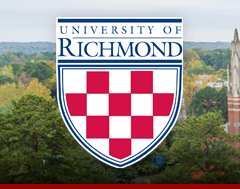Abstract
Trees have been extensively researched, and it has been concluded that they are useful not only useful tools in enhancing biofiltration, as well as managing stormwater and retaining sediment, but they also benefit the health of the ecosystem as a whole. But as the University of Richmond’s Gambles Mill Eco-corridor was restored between 2018 and 2019 in order limit to the amount of phosphorus, nitrogen, and other sediment flowing into the Little Westham Creek; many of the trees that combat these problems were removed. The following research intends to analyze the number of trees actually removed throughout the restoration, as well as explore the future of Gambles Mill Eco-corridor in regard it’s plant life, and opportunities surrounding it. In order to complete this analysis, drone imagery from before and after the restoration as well as blue prints of the restoration were utilized. These images were used combination with ARCGIS software to complete a visual analysis of the number of trees removed. Through this analysis, it was concluded that 14-16% of the total trees in the Gambles Mill Eco-corridor polygon were removed throughout this restoration and that within roughly 35-40 years, those trees will be replenished with mature native trees. This analysis is especially important, not only given the importance of trees in an ecosystem, but also highlights the disturbance that the restoration entailed, shedding light on the emphasis for the university to maintain the restored eco-corridor and ensure its wellbeing in the future.
Paper prepared for the Environmental Studies Senior Seminar.
Faculty Advisor: Dr. Todd Lookingbill
Document Type
Unpublished Paper
Publication Date
4-30-2020
Recommended Citation
Harrell, Zach. "Tree Removal Analysis of the 2018-2019 Gambles Mill Eco-Corridor Restoration." Paper for Environmental Studies Senior Seminar, University of Richmond, April 2020.

